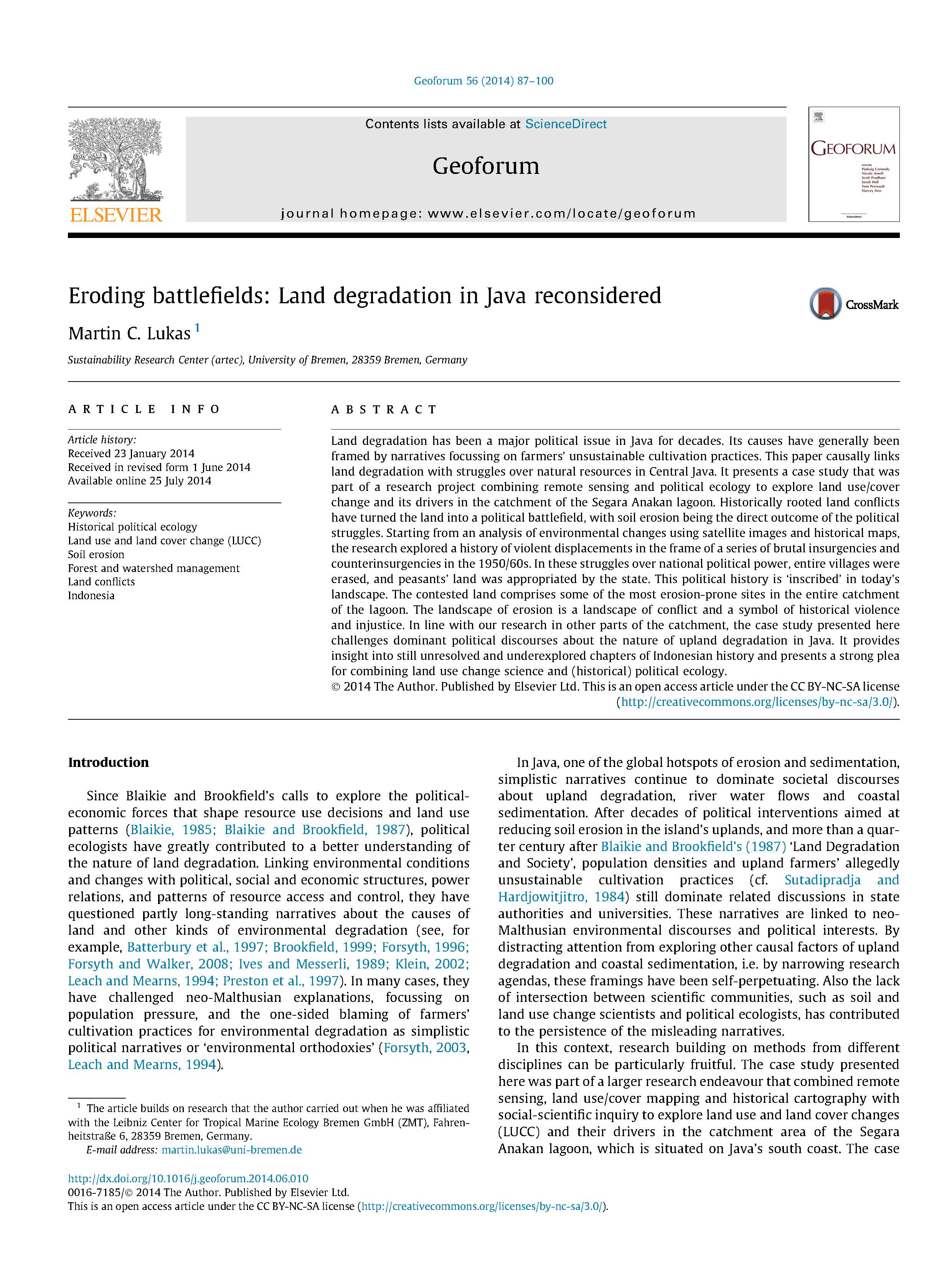A study from the perspectives of the forest's owners designated by the Matsudo City green regulations about the opening the privately owned forests
This study is based on the Forest's Owners designated by the Matsudo City Green Regulations. It aims is develop the current Conservation Policy State on Privately Owned Forests and those forests open to the local residents, as well as to examine the achievements and tasks of public visit management and cooperation with citizen's organizations. In this survey we gave a questionnaire to the landowners, and conducted an interview with the personal from the local government offices.
Differences in carbon sink by land use using topographic correction in Seoul, South Korea
This study attempts to confirm the differences in carbon sink according to each type of land use by using the biotope map and reviewing carbon sink considering topography, and comparing those before-and-after topographic correction. The types of carbon sink were focused on Normalized Difference Vegetation Index (NDVI), Leaf Area Index (LAI) and Net Primary Productivity (NPP).
Effect of land use change on urban heat at Vientiane capital, Lao PDR
Importance of the granulometric composition groups in carbon accumulation in mineral topsoil within LUCAS 2009 project
Soil samples in 349 sampling plots were obtained within the LUCAS project in 2009; from these, 205 soil samples were collected in agricultural lands (grasslands, arable lands, grasslands overgrown by trees and shrubs), and 133 soil samples were obtained in forests (deciduous, coniferous and mixed forests), as well as 7 soil samples–in scrublands.
Crawler-type transport mechanism that can travel over forest land
Japan's forest industry operates in mountainous regions rather than hilly areas. The forest road density is also low, and it is not easy to develop new roads and maintain them. Therefore, the work of moving about and transporting heavy loads over irregular mountain forest terrain far from roads is still hard labor performed by humans. Even today, a little technical development has been done to assist in this work.
Fertilization during the establishment of a Eucalyptus camaldulensis plantation in the northern Brazilian Amazon = Adubação no estabelecimento de um plantio de Eucalyptus camaldulensis na Amazônia setentrional brasileira
Forestry plantations should be regarded as an alternative sustainable land-use system in degraded savannah areas. They contribute to the maintenance of productive processes in degraded soils that are of economic importance for local inhabitants; in addition, in the ecological sense, timber and non-timber products from planted forests reduce the exploitation pressure on native forests. Eucalyptus plantations on degraded savannahs in the northern Brazilian Amazon may help to reduce exploitation pressure on native forests.
Eroding battlefields: Land degradation in Java reconsidered
Land degradation has been a major political issue in Java for decades. Its causes have generally been framed by narratives focussing on farmers’ unsustainable cultivation practices. This paper causally links land degradation with struggles over natural resources in Central Java. It presents a case study that was part of a research project combining remote sensing and political ecology to explore land use/cover change and its drivers in the catchment of the Segara Anakan lagoon.
Contested aquaculture development in the protected mangrove forests of the Kapuas estuary, West Kalimantan
Indonesia comprises more mangroves than any other country, but also exhibits some of the highest mangrove loss rates worldwide. Most of these mangrove losses are caused by aquaculture development. Monetary valuation of the numerous ecosystem services of mangroves may contribute to their conservation.
Guide to Land Contracts: Forestry Projects
This guide aims to assist non-lawyers to better understand investment contracts that concern forestry projects. These "forestry contracts" can be complex, and some provisions may be difficult to understand. This guide aims to assist the reader in understanding technical provisions found in these contracts, by providing explanations for common provisions, as well as a glossary of certain legal and technical terms.
This resource is part of the CCSI’s Directory of Community Guidance on Agreements Relating to Agriculture or Forestry Investment.





